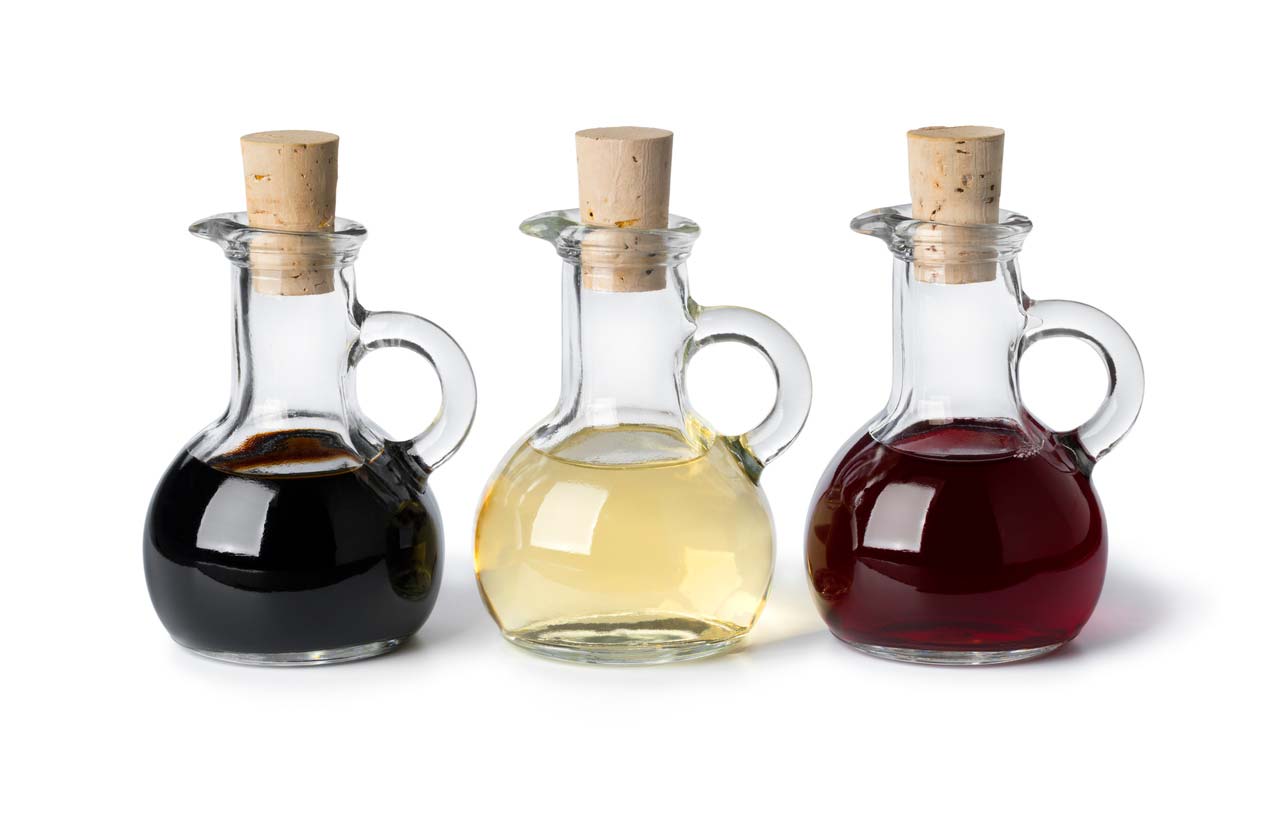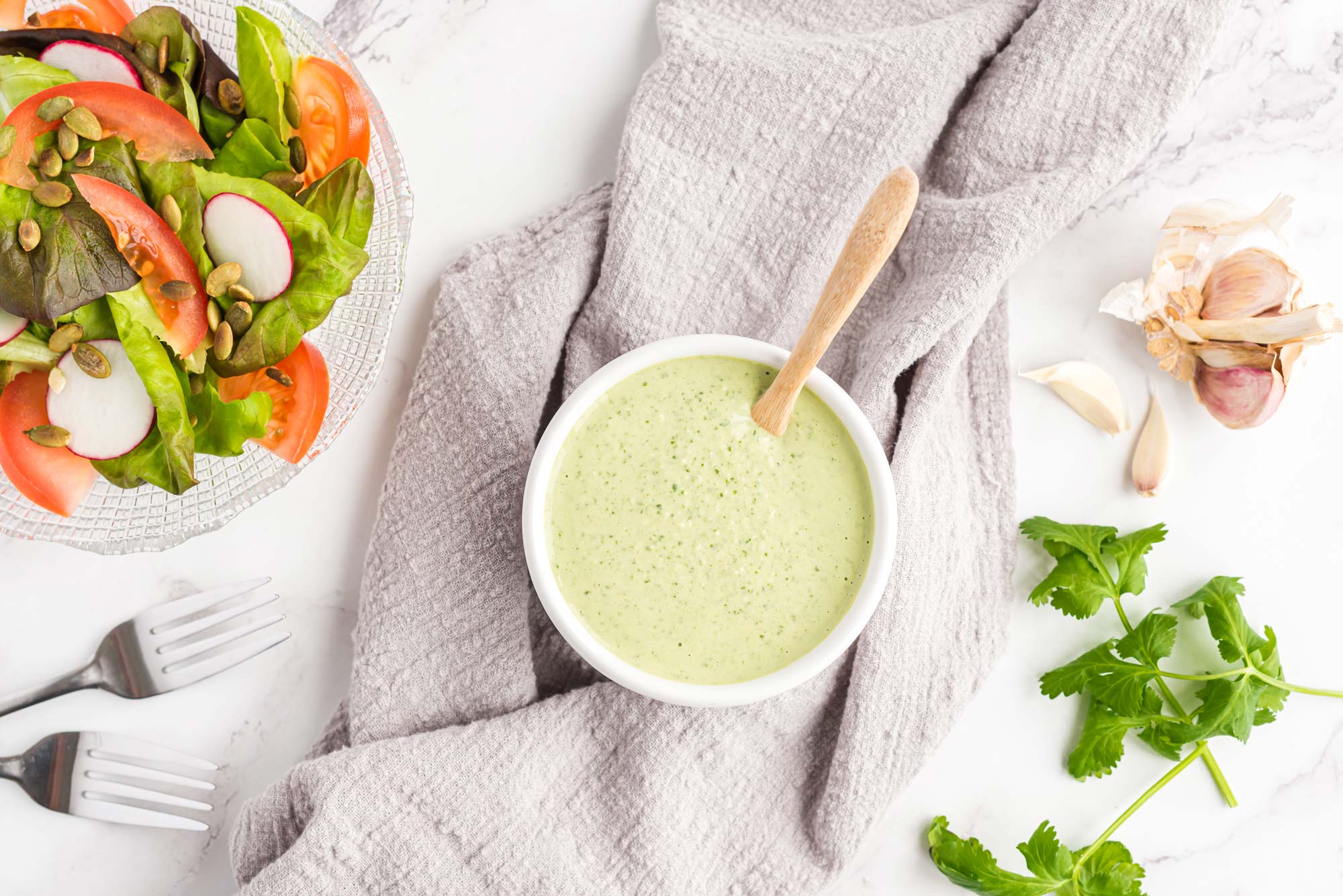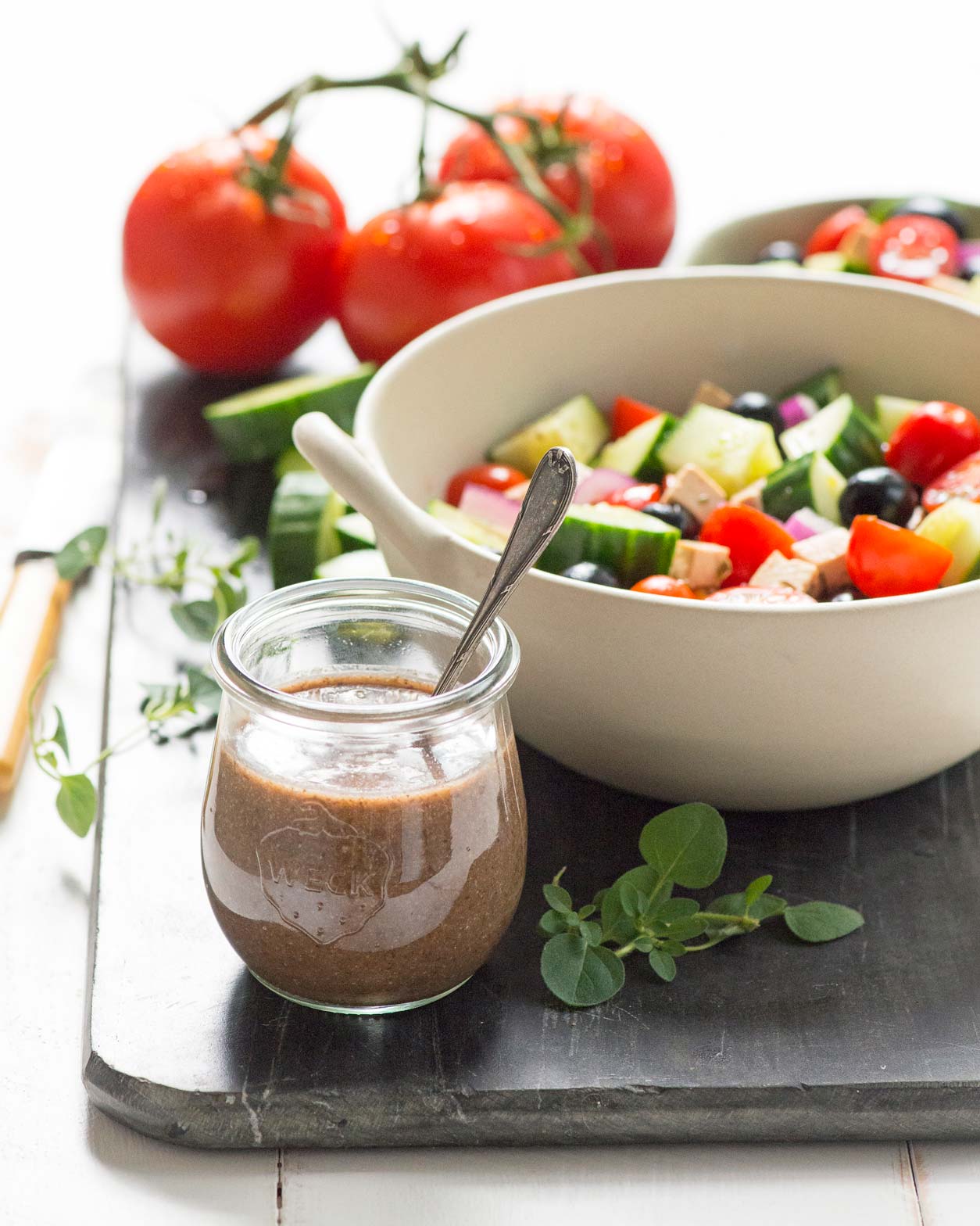Vinegar has been a kitchen staple for a long time but mainly in a role as junior partner to salad dressing, with its buddy oil. These days, though, vinegar is having its moment in the sun. You can’t scan the supermarket checkout line magazine display without seeing a headline touting the miraculous healing power of vinegar in general, and apple cider vinegar, in particular. The way some alternative health bloggers are gushing, you’d think vinegar is some kind of miracle cure-all for ailments as diverse as diabetes, constipation, and jock itch. It’s also celebrated as an all-natural house cleaner and weed killer, as well as having culinary and beauty uses. But what exactly is vinegar? What does science say about its benefits? And should it be part of a healthy diet?
What is Vinegar?

The word “vinegar” comes from the French words vin and aigre, which translate to “sour wine.” That’s a pretty accurate description if you’ve ever tasted or even taken a whiff of vinegar.
Vinegar is a fermented liquid composed of acetic acid and water, made from almost any carbohydrate source that can undergo fermentation. The common sources are grapes and apples. But you can also find malt vinegar made from malted oats or barley, white vinegar made from industrial grain alcohol (the grain that’s used is typically corn, so go organic if you want to steer clear of GMOs), and you can also find vinegar made from fruit, rice, or beer. The yeast in the carbohydrate ferments the natural food sugars to alcohol. And then, acetic acid bacteria — Acetobacter — converts that alcohol to acetic acid.
The fermentation process can either be fast or slow. For quick methods, oxidation of the liquid occurs with agitation. And the bacteria culture is submerged into it. Traditional wine vinegars typically use a slow method. And the fermentation process can take weeks to months. Over this prolonged period, a non-toxic slime made of yeast and acetic acid bacteria (called Mother of Vinegar) arises. Different types of vinegar ferment for different lengths of time, which determines their flavor. At the extreme end, some balsamic vinegars can ferment for up to 25 years and cost more than many fine wines.
Is There Alcohol in Vinegar?
Although vinegar is non-alcoholic, trace alcohol amounts (between 0.5% to, in very rare cases, as high as 2%) may remain in the final product depending on the origins of its ingredients. For people who are extremely sensitive to alcohol, it might make sense to steer clear of wine vinegar or beer vinegar. But the truth is that vinegar is very strong tasting. And I’ve never heard of anyone getting pulled over because they were “buzzed” on balsamic dressing.
Brief History of Vinegar
Throughout history, humans used vinegar for culinary and medicinal purposes. Doctors and natural healers deployed vinegar to treat ailments ranging from croup (a respiratory infection) to poison ivy to upset stomachs. Around 2,400 years ago, Hippocrates prescribed vinegar to treat wounds, coughs, and colds. Tommaso Del Garbo, a famous Italian physician, recommended people wash their hands, faces, and mouths with vinegar during a 1348 outbreak of plague in hopes of avoiding infection.
Historical culinary vinegar uses include flavoring and preserving food. The ancient Babylonians, Egyptians, Romans, and Hebrews discovered vinegar’s food preservation capabilities as a sour byproduct of making wine, which itself may have been discovered by some fortuitously forgetful person who left the grape juice out too long. Both the Old and New Testaments of the Bible mention vinegar. The most famous reference being when Roman soldiers offered Jesus wine vinegar on the cross as they mocked him. Fast forward to today, and many of us know vinegar best as a few colorful bottles tucked in the pantry, with a variety of uses in and out of the kitchen.
Nutritional Profile of Vinegar
Per Food and Drug Administration requirements, commercial food-grade vinegar contains at least 4% acetic acid, but this may be as high as 8%. The acetic acid content is responsible for the characteristic pungency and tartness of vinegar as well as most of its touted health, beauty, cleaning, and weed killing benefits. (However, if you ever come across vinegar with a concentration of greater than 10%, treat it like one of those dangerous bottles from high school chemistry class. Yes, it’ll remove the grease from your garage floor, but it’s also liable to remove or irritate the skin from your hand while you scrub. And definitely don’t drink it!)
Depending on the variety, one tablespoon of vinegar contains anywhere from two to 15 calories. While vinegar doesn’t contribute many calories to your diet, certain kinds do contain trace amounts of vitamins and minerals, as well as amino acids and polyphenolic compounds. For instance, you can find a small amount of potassium in many brands of apple cider vinegar.
Vinegar Health Benefits

Vinegar has a wide variety of uses in treating different conditions and symptoms throughout history, but scientific evidence has not yet validated vinegar as an effective treatment for most diseases. Still, some animal and human studies have found that vinegar does have promising health benefits that warrant further exploration. Below are some of the most popular health claims associated with vinegar — and what the research says about them.
1. May help reduce the risk of heart disease.
Some animal studies show the ability of vinegar to lower high blood pressure — a risk factor for heart disease — but its effect on humans isn’t known. However, a 1999 study of 76,283 women, tracked over ten years, found that those who ate oil-and-vinegar salad dressing at least five to six times per week had a lower risk for developing fatal heart disease. Researchers suggested this was due to the ALA or alpha-linolenic acid (an omega-3 fatty acid) content of the dressings. But the vinegar-consuming group experienced more heart protection than those who ate mayonnaise-based dressings, which also contain ALA. So it’s entirely possible that the vinegar might have been an important part of the outcome.
2. May have antitumor activity.
Vinegar has demonstrated the ability to cause human leukemia cells to die and inhibit cancer cell growth in other studies. Animal studies show that vinegar added to drinking water has a protective effect against rats developing azoxymethane-induced colon cancer. (In case you’re wondering, azoxymethane is a chemical whose main use by humans is to induce cancer in some very unfortunate rats and mice so humans can study cancer treatment and prevention. Yes, that’s a thing.) One likely reason for this is that vinegar is a source of polyphenols, which are plant compounds designed to defend against oxidative stress that can damage cells and lead to diseases like cancer. Still, more long-term population-based research is needed, as epidemiologic studies have shown mixed results.
3. May help regulate blood sugar.
Vinegar appears to have an antihyperglycemic effect in people by improving insulin response to sugar intake. And this effect is even more significant among people with insulin resistance. A 2004 study found that consuming a vinegar test drink that included 20 grams of vinegar before a carbohydrate-rich meal reduced post-meal blood sugar by 64% compared to a placebo.
4. May support healthy weight loss.
Some people report that consuming vinegar increases feelings of satiety, which may help prevent overeating that can lead to unwanted weight gain. In a small 2005 study published in the European Journal of Clinical Nutrition, researchers gave 12 healthy participants identical serving sizes of three kinds of vinegars with different concentrations of acetic acid (18, 23 and 28 mmol, respectively) with a 50 gram serving of white bread. Then, the researchers assessed their satiety and post-meal glucose and insulin responses. They found that consuming bread alone — the placebo — had the lowest impact on satiety. And the higher the acetic acid content of the vinegar, the fuller and more satiated the participants felt. In another study, two tablespoons of apple cider vinegar, consumed daily for three months, helped overweight adults lose an average of two to four pounds.
5. May have antimicrobial effects.
Vinegar may help fight off harmful germs. In a 2018 study published in Scientific Reports, researchers examined the antimicrobial activity of apple cider vinegar (ACV) against E. coli, S. aureus, and C. albicans. These microbes can trigger a dangerous and sometimes fatal reaction of the human immune system known as a cytokine storm. Put simply, a cytokine storm is basically such an immune overreaction that the system more or less goes haywire and can’t reset itself. The researchers found vinegar downregulated the inflammatory cytokines in a dose-dependent fashion (the less diluted the ACV, the stronger the effect). Their conclusion was that apple cider vinegar could have potential applications for acute infections and for autoimmune-induced immune dysregulation, though more research is still necessary.
6. Other Health Benefits
Other potential (though not necessarily confirmed) health benefits of consuming vinegar, especially apple cider vinegar, include using it to fight colds and other viruses, alleviating symptoms of acid reflux, supporting digestive health, and having a natural detoxification effect on the liver. It might also help with hormonal regulation. One three-month study found that women with polycystic ovary syndrome who drank one tablespoon of apple cider vinegar with about seven ounces of water immediately after dinner experienced more regular periods and improved hormone levels.
Side Effects and Risks of Consuming Vinegar

While vinegar offers a number of potential health benefits when used in moderate amounts, risks do exist. And these risks are largely dependent on individual factors and uses.
Some potential risks of consuming vinegar can include:
- Corrosive and inflammatory damage to your esophagus if you drink it straight and undiluted. Keep vinegar away from children as it’s a potentially caustic substance.
- Damage to the enamel on your teeth due to its high acidity. Early signs of enamel erosion may include increased sensitivity to sweets and hot or cold temperatures. Some people suggest that following vinegar consumption swish pure water in your mouth. Then, take some xylitol mints to help create a more alkaline oral environment. Furthermore, consuming vinegar as a component of a meal is likely to have a less damaging effect on enamel than vinegar consumed alone.
- Reduced potassium levels in your body, which can contribute to osteoporosis or weakened bones. However, vinegar-induced bone loss has only been documented in tandem with heavy, long-term use. In one such case, a woman consumed an average of a cup of 5% vinegar a day for around six years.
- Lowered blood sugar levels. People with diabetes should be especially vigilant if using vinegar to make sure their blood sugar doesn’t drop too low. This antihyperglycemic effect can be a double-edged sword for diabetics, both reducing their need for insulin but also potentially putting them in danger of hypoglycemia.
- Stomach discomfort or digestive burning sensations, especially among people with existing stomach problems like ulcers or other digestive conditions. The acidity of vinegar may cause feelings of indigestion or nausea, especially if it isn’t sufficiently diluted.
- Histamine-related reactions among people with histamine intolerance or sensitivities because histamine can result from the vinegar fermentation process.
Types of Vinegar and Their Culinary Uses

There are several varieties of vinegar, each with unique tastes and best uses in the kitchen. Some of the most common are listed below.
- Distilled White Vinegar: This is the sharpest and cleanest vinegar of all varieties, and doesn’t come with a ton of flavor, meaning it pairs well with just about everything. White vinegar is a top pick for pickling. Typically made from corn or wheat (via ethanol), try to get an organic white vinegar variety if you want to steer clear of glyphosate.
- Apple Cider Vinegar: This variety is often described as tasting like hard apple cider. It pairs well in dishes that already incorporate fruit like apples or pears. You can also mix apple cider vinegar with non-dairy milk (usually one tbsp of vinegar plus one cup of milk) to make a plant-based buttermilk for cooking.
- Red Wine Vinegar: Made from red wine, this variety has a tangy, fruity taste. Red wine vinegar works well in marinades, salad dressings, and Italian dishes.
- White Wine Vinegar: White white vinegar tends to have a less robust taste than red wine vinegar. Its best uses include light sauces, marinades, and more delicate salad dressings.
- Balsamic Vinegar: Made from Trebbiano (red) or Spergola (white) grapes grown in specific regions of Italy, balsamic vinegar has a dark color and a caramelized flavor that makes it a good addition to desserts as well as fresh fruits and grilled vegetables. Some balsamic vinegars are very sweet, so check the sugar content if you don’t want to unintentionally add sugar to your diet.
- Malt Vinegar: This is a less common, dark vinegar made from ale. It has a toasty, nutty flavor that lends well to homemade fries, roasted potatoes, or to make a unique salad dressing.
- Rice Vinegar: This variety is distinctly sweeter than other vinegars, and is often used in Asian cuisine, especially sweet and sour dishes. Rice vinegar also has uses in marinades, sushi rice, or pickling.
It’s fun trying a few different vinegars and seeing how you like to use them most. Or pull out a variety you’ve kept on the shelf and experiment with its flavor. When possible, buy organic vinegar to minimize exposure to pesticides and GMOs.
Recipes Using Vinegar
Ready to have some fun with vinegar? Here are recipes you can use to make your own, to craft some “Fire Cider,” or to whisk up a couple of delightful dressings.
1. Make Your Own Apple Cider Vinegar

Want to learn how to make your own apple cider vinegar? This DIY recipe contains only apples, sugar, and water. The ingredients and process are simple. But the fermentation takes time, so plan ahead and practice patience!
2. Fire Cider

Apples are wonderful, but an ounce or two of fire cider a day may keep the doctor away! Patience is the name of the game with DIY fire cider. Make a large batch, store in a dark place, and four weeks later, your apple cider vinegar tonic is ready for your enjoyment.
3. Green Goddess Dressing

Apple Cider Vinegar adds just the right amount of tartness to this blend of tahini, herb, garlic, and onion. Use it in wraps, as a salad dressing, or on top of grain bowls.
4. Greek Salad Dressing

Toss this delicious dressing with classic Greek salad ingredients like cucumbers, tomatoes, olives, and vegan feta (or hummus), or use in any salad ingredient mix!
Vinegar for Cleaning
Aside from its culinary and medicinal uses, vinegar is also a natural and inexpensive cleaner. White vinegar, in particular, is an extraordinarily versatile and effective non-toxic cleaning agent. Its acidity (from acetic acid) makes it effective for killing most mold, bacteria, and germs.
You can use vinegar as a rinse aid in dishwashers and a fabric softener in laundering. And it beautifully shines and polishes chrome faucets. As it dries, the vinegar smell disappears completely.
You can also use vinegar to mop a floor or wipe down tabletops, appliances, and toilet seats. One caveat, though: vinegar can harm marble and other stone, in addition to wood, so it’s best not to use it for porous surfaces.
The cleaning properties of white distilled vinegar are well known. But apple cider vinegar can also be useful. Most other vinegars aren’t suitable for cleaning, however. They may have a coloring agent that could stain surfaces. And they may also have too low an acidity level to clean effectively.
Want to save a little money? Distilled white vinegar (and most other vinegars) are self-preserving and don’t need refrigeration. Their shelf life is almost indefinite. If you buy vinegar by the gallon, you’ll save money on small bottles that typically make up personal care products while also cutting down on your plastic usage.
Should You Use Vinegar for Health?
Vinegar has a long history of use and many purported health benefits, some of which science supports. It’s also an effective household cleaner. Still, more research is necessary to support most of these claims. As long as you dilute vinegar, or use it as part of a meal or recipe, it’s generally not harmful when consumed and may be beneficial as part of a healthy diet. And if it gets you to eat more veggies, then hurray!
Tell us in the comments:
- What’s your favorite kind of vinegar to cook with, and what do you like to make with it?
- Have you ever used vinegar for cleaning or other purposes? How did it work?
- Have you ever experienced health benefits or problems from consuming vinegar? If so, tell us more!
Feature image: iStock.com/Santje09

